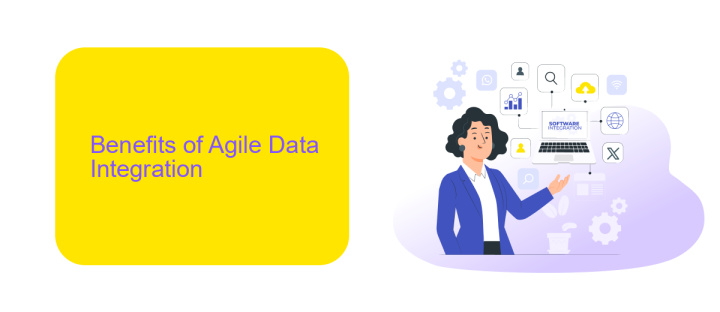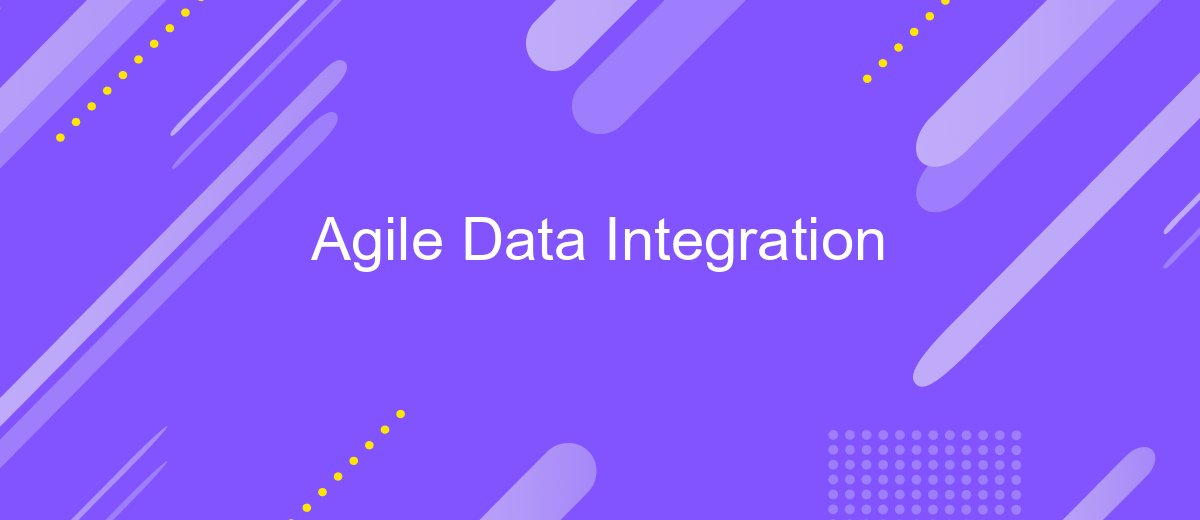Agile Data Integration
Agile Data Integration is revolutionizing the way organizations manage and utilize their data. By adopting agile methodologies, businesses can achieve faster, more flexible, and more efficient data integration processes. This approach not only accelerates time-to-insight but also enhances adaptability to changing requirements, ensuring that data remains a strategic asset in an ever-evolving digital landscape.
Introduction
Agile Data Integration is a modern approach to data management that emphasizes flexibility, collaboration, and rapid iteration. This methodology allows businesses to efficiently integrate data from various sources, ensuring that they can quickly adapt to changing requirements and market conditions. By leveraging agile principles, organizations can streamline their data processes and deliver high-quality insights faster.
- Increased flexibility and adaptability
- Improved collaboration across teams
- Faster time-to-insight
- Enhanced data quality and consistency
One of the key aspects of Agile Data Integration is the use of tools and services that facilitate seamless data integration. For instance, ApiX-Drive offers a robust platform that simplifies the process of connecting different data sources and automating workflows. By utilizing such services, businesses can reduce the complexity of their data integration efforts and focus on deriving actionable insights. This approach ensures that data remains a valuable asset, driving informed decision-making and continuous improvement.
Benefits of Agile Data Integration

Agile Data Integration offers numerous benefits, enhancing the flexibility and responsiveness of data management processes. By adopting an agile approach, organizations can quickly adapt to changing business requirements and integrate new data sources with minimal disruption. This leads to faster decision-making and improved business agility, as teams can access and analyze data in real-time. Furthermore, agile methodologies promote continuous improvement and iterative development, ensuring that data integration processes are always optimized for efficiency and effectiveness.
Another significant advantage of Agile Data Integration is the ability to leverage modern integration tools and services, such as ApiX-Drive. ApiX-Drive simplifies the integration of various data sources and applications, enabling seamless data flow across different systems. This not only reduces the complexity and time required for integration but also enhances data accuracy and consistency. By utilizing such tools, organizations can ensure that their data integration processes are scalable and adaptable to future needs, ultimately driving better business outcomes and maintaining a competitive edge in the market.
Steps to Implement Agile Data Integration

Implementing Agile Data Integration involves a series of strategic steps to ensure seamless and efficient data flow across systems. This process is iterative and flexible, allowing for continuous improvement and adaptation to changing requirements.
- Assessment and Planning: Begin by assessing your current data infrastructure and identifying integration needs. Develop a clear plan outlining objectives, timelines, and resources.
- Select Integration Tools: Choose appropriate tools and platforms, such as ApiX-Drive, which facilitate easy and automated data integration between various applications and services.
- Data Mapping and Transformation: Define how data from different sources will be mapped and transformed to ensure consistency and compatibility.
- Implement and Test: Develop and deploy integration workflows. Conduct thorough testing to identify and resolve any issues before full-scale implementation.
- Monitor and Iterate: Continuously monitor the integration process. Gather feedback and make necessary adjustments to improve performance and address new requirements.
By following these steps, organizations can achieve a robust and flexible data integration framework that supports agile methodologies. Tools like ApiX-Drive play a crucial role in simplifying the integration process, enabling businesses to focus on leveraging their data for strategic decision-making.
Challenges and Considerations

Implementing Agile Data Integration poses several challenges that organizations need to address to ensure seamless and effective data flow. One major challenge is managing the complexity of integrating diverse data sources while maintaining data quality and consistency. Additionally, ensuring real-time data synchronization across various systems can be a daunting task.
Another consideration is the scalability of the integration solution. As data volumes grow, the integration framework must be able to handle increased loads without compromising performance. Security is also a critical concern, as sensitive data must be protected throughout the integration process.
- Managing diverse data sources
- Ensuring real-time data synchronization
- Scalability of the integration solution
- Data security and compliance
Tools like ApiX-Drive can facilitate the integration process by providing a user-friendly platform to connect various data sources efficiently. This service allows for automated data synchronization, reducing the manual effort required and minimizing the risk of errors. Additionally, ApiX-Drive offers robust security features to protect sensitive data, making it a valuable asset for organizations looking to implement Agile Data Integration.
- Automate the work of an online store or landing
- Empower through integration
- Don't spend money on programmers and integrators
- Save time by automating routine tasks
Conclusion
In conclusion, Agile Data Integration offers a dynamic and flexible approach to managing and integrating data across various platforms. By embracing agile methodologies, organizations can rapidly adapt to changing data requirements, ensuring that data integration processes are both efficient and scalable. This approach not only enhances data quality but also accelerates decision-making processes, providing a competitive edge in today's fast-paced business environment.
Moreover, leveraging tools like ApiX-Drive can significantly streamline the integration process. ApiX-Drive allows for seamless connectivity between disparate systems, automating data flows and reducing the need for manual intervention. This not only saves time but also minimizes errors, ensuring that data is consistently accurate and up-to-date. By incorporating such services, businesses can enhance their agility and responsiveness, ultimately driving better business outcomes and fostering innovation.
FAQ
What is Agile Data Integration?
How does Agile Data Integration differ from traditional data integration?
What are the key benefits of Agile Data Integration?
How can I automate data integration processes in an Agile environment?
What challenges might I face when implementing Agile Data Integration?
Apix-Drive will help optimize business processes, save you from a lot of routine tasks and unnecessary costs for automation, attracting additional specialists. Try setting up a free test connection with ApiX-Drive and see for yourself. Now you have to think about where to invest the freed time and money!


